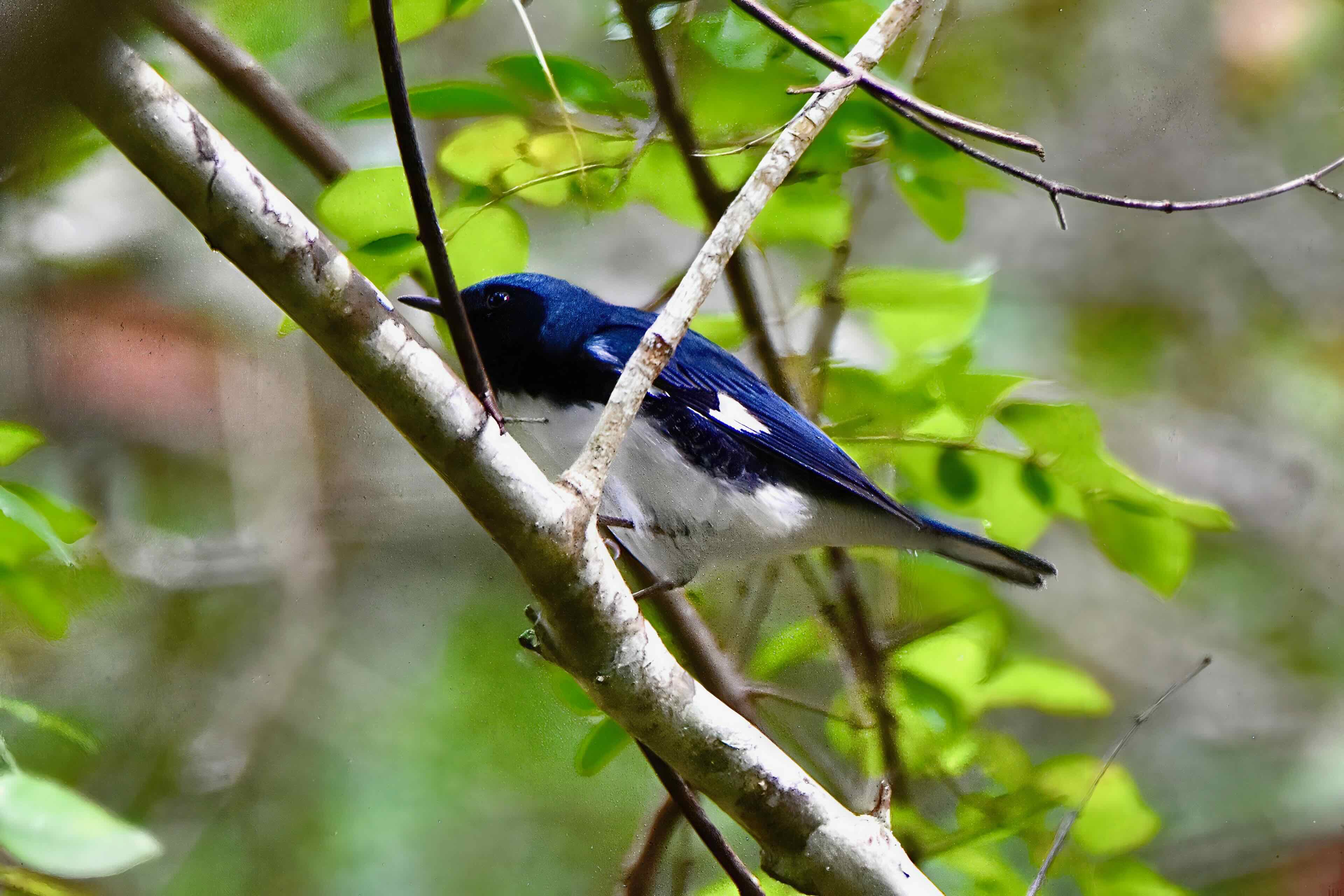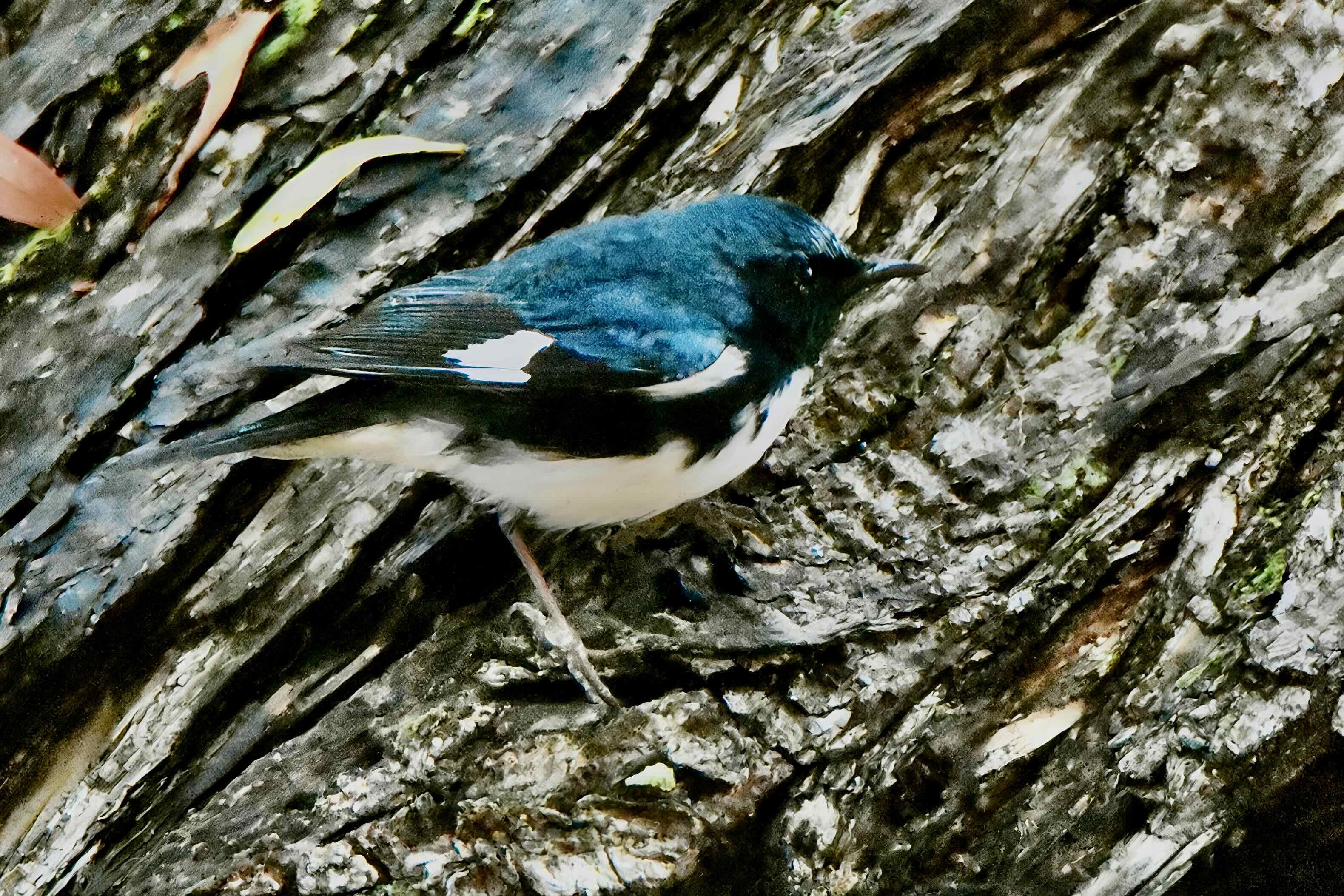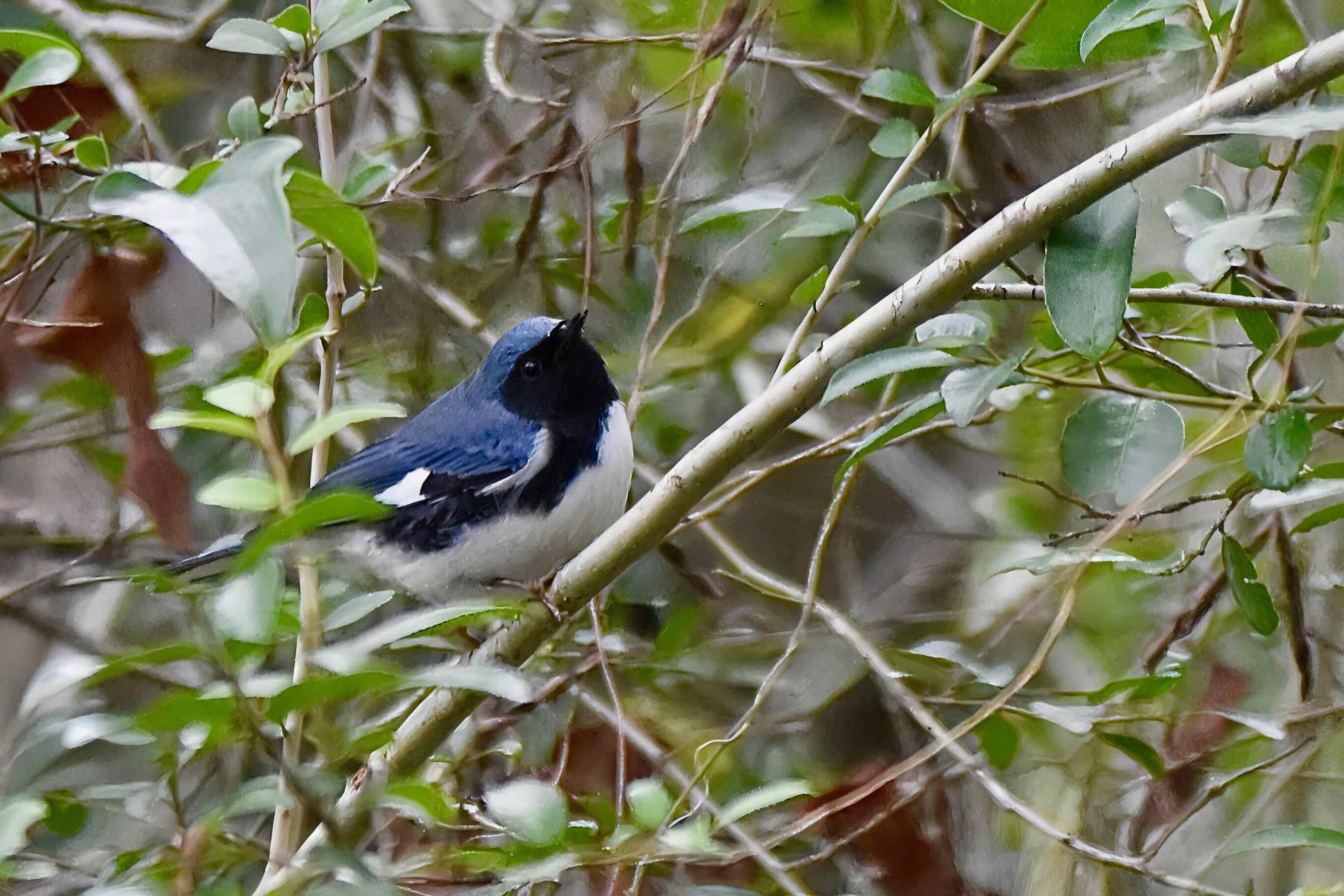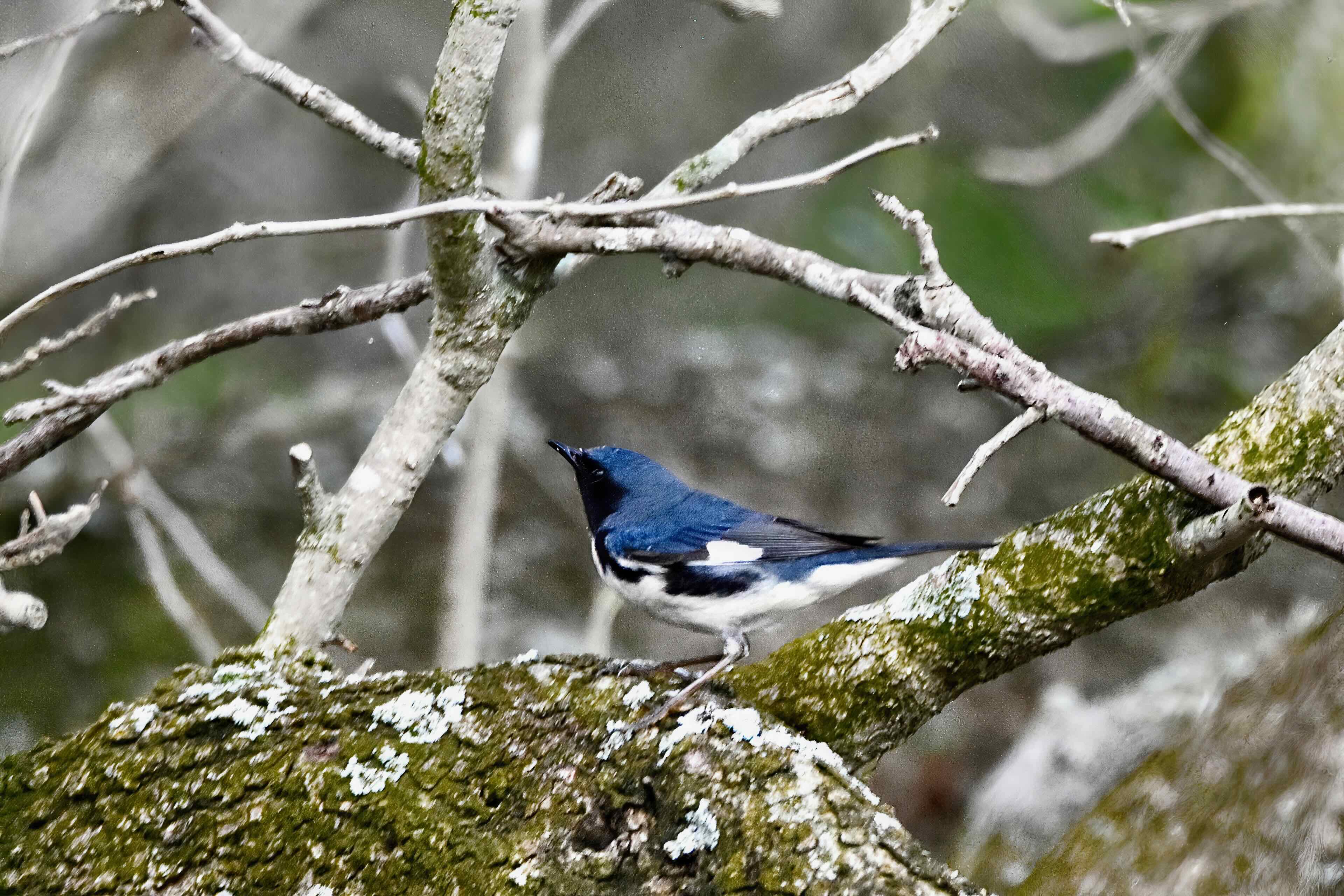
Black-throated blue warbler, photographed at Anastasia State Park, St. Augustine, St. Johns County, in October 2018.
There are few birds with a more descriptive name than the black-throated blue warbler, Setophaga caerulescens. The name tells you almost everything you need to know to identify this bird even if you've never seen one before.
Black-throated blue warblers are birds of the deep woods. They breed as far north as southern parts of Canada, through the Appalachians and into northeastern Georgia. They winter in the Bahamas, the Caribbean and Central America.
A small population spends winter in extreme southern Florida. Until relatively recently, small numbers of black-throated blue warblers would be spotted during the annual Christmas bird counts, but their presence here was not otherwise documented until earlier in this century. For most of Florida and much of the eastern United States outside of Appalachia, the black-throated blue warbler is seen only in the fall and spring during migrations.
Males have a black face, throat and upper chest, with a blue back and blue wings. They also have a prominent white patch on the wings. Chest and bellies are white. Altogether, it's got to be one of easiest warblers to identify.
Females, however, are altogether different. They're a drab olive through the head, back and wings, with a white patch on the wings. Underneath, they're a dull white or slightly yellow. They also have a light white band over the eyes. According to the Cornell University Laboratory of Ornithology, males and females are so different that they were originally believed to be different species.
From a size standpoint, they're typical warblers, small, about four inches to slightly more than five inches in length. They have a wingspan of seven to eight inches.
Their diet includes small fruit and bugs — caterpillars, moths, and spiders, which they pick off the undersides of leaves. In winter, their diet becomes more vegetarian — grains and fruits — while still downing a few insects. In contrast with most of their skittish warbler cousins, black-throateds are patient foragers, working an area for several minutes before moving on.
Black-throated blue warblers nest in deep woods, selecting shrubs and saplings as the site for their homesteads. Females build the nest using strips of bark and plant fibers held together with cobwebs and spit and lined with finer material like moss and hair. Males gather the material.
Females lay clutches of two to five eggs, which require less than two weeks of incubation before hatching. Females handle sitting duties, but males can do much of the rearing. Black-throated blue warblers fledge after eight to 10 days but still require parental care, often provided solely by the dad, because mom might be off handling a second or third brood. Black-throated blue warblers are mostly monogamous and pairs will remain together season after season.
The population of black-throated blue warblers is considered secure, but loss of breeding habitat remains a threat to their future. They are members of Parulidae, the wood-warbler family. Note: we've also seen black-throated blue warblers as Dendroica caerulescens. Dendroica is the former name for the warbler genera.



